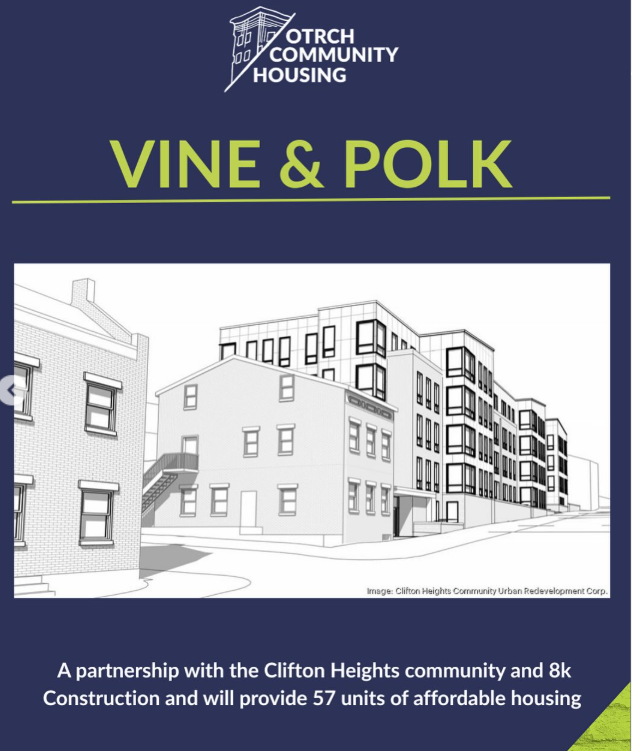Community Development Undergirds & Accelerates Economic Growth
By Rosa Christophel, Executive Director, HomeBase Cincinnati
As Cincinnati plans for its future through the lens of talent attraction, population growth, innovation, housing production, and investment, we must be careful not to overlook one of our most powerful and proven strategies for economic prosperity: community development.
Before leading HomeBase Cincinnati, I served four-years as Research Manager for our local regional economic development entity, where I lived in economic, industry, and talent data—analyzing and comparing labor markets, industries, jobs, quality of life, and cost of living. I answered international and local fortune 500 companies’ RFQ/Ps and saw firsthand how decisions about where to invest were shaped not only by workforce and industry data, but equally by cost of living and quality of life & place. That perspective informs my conviction that community development is a central driver of economic growth.
Too often, economic development is treated as a separate conversation, focused on job creation, incentives, and major real estate deals. But thriving economies don’t start at the skyline- they start in neighborhoods. Community development sustains and accelerates economic development, even in places where the market isn’t investing yet.
Community development corporations (CDCs) serve as trusted resident representatives and liaisons to larger development deals. That trust is critical: community members can support and propel a project forward or stop it dead in its tracks. By bridging neighborhood priorities with larger investments, CDCs help ensure that economic & private development is rooted in trust, legitimacy, and community buy-in. Importantly, they lay the foundation for inclusive growth by investing in the stability, character, and capacity of the very places where people live, work, and dream.
And the data bears this out. A recent study by the University of Cincinnati Economics Center found that just three neighborhood-based community development corporations (CDCs); Avondale Development Corporation, Price Hill Will, and College Hill CURC, and HomeBase Cincinnati, collectively generated $282 Million in direct & indirect economic output between 2021 and 2023. Their work supported 1,938 jobs and returned more than $105.3 Million in tax revenue (CDC MSA Economic Impact Report; pg 12, table 7) to local and state government during that time within the Cincinnati MSA. These are not downtown towers or national companies; these are local, resident-rooted efforts focused on affordable housing, business district revitalization, and quality of life improvements.
What makes community development unique is its deep alignment with local priorities, and willingness to work and take risks in places where others won’t. Consider these two neighborhood-based organizations’ efforts: When the Roselawn Business Alliance received federal ARPA emergency relief funds from the City of Cincinnati through HomeBase during the pandemic, they distributed $80,000 in grants to small businesses- daycares, barbershops, restaurants- within two weeks. That support kept employers afloat and ensured essential services remained in the community. Similarly, the Carthage Civic League, an all-volunteer neighborhood group, has led a community-driven effort to turn two vacant parcels into public gathering space. The result is Carthage Commons park—an emerging anchor that reimagines and beautifies public space, builds social cohesion, and signals momentum to future investors.
Programs like the City of Cincinnati’s Quick Strike Acquisition Support have made it possible for neighborhoods to take proactive control of vacant, blighted, or catalytic sites. This has already unlocked transformative projects: including projects like Vine + Polk, a $20 Million development in CUF creating 57 affordable units, and a 9% LIHTC recipient, and Belmar Hills, the first senior affordable housing development in Mt. Washington, which received 4% LIHTC. These and the other three CDC-led projects have leveraged $1 Million to create at least $100 Million in development from the program’s first funding round and are proof that community-led development can also be catalytic economic development.
The lesson here is clear: place-based investment doesn’t just strengthen neighborhoods, it supercharges economic development. It stabilizes blocks, attracts businesses, and creates the type of communities where people want to stay and grow. It does so in a way that is often more inclusive, sustainable, and grounded than top-down approaches. And CDCs are the backbone for this work.
Cincinnati’s Futures Commission recognized this reality, naming community-based capacity building and local development funding as core strategies in its regional economic vision. But to meet that vision, we must invest in our CDCs to ensure that community development is a front-line priority.
That means supporting the people and organizations working block-by-block to create vibrant, inclusive, and resilient neighborhoods. These efforts are not a detour from economic development, they are a direct path to it.
Let’s continue to treat them not as separate priorities, but as interdependent strategies that allow us to move our city forward together.





